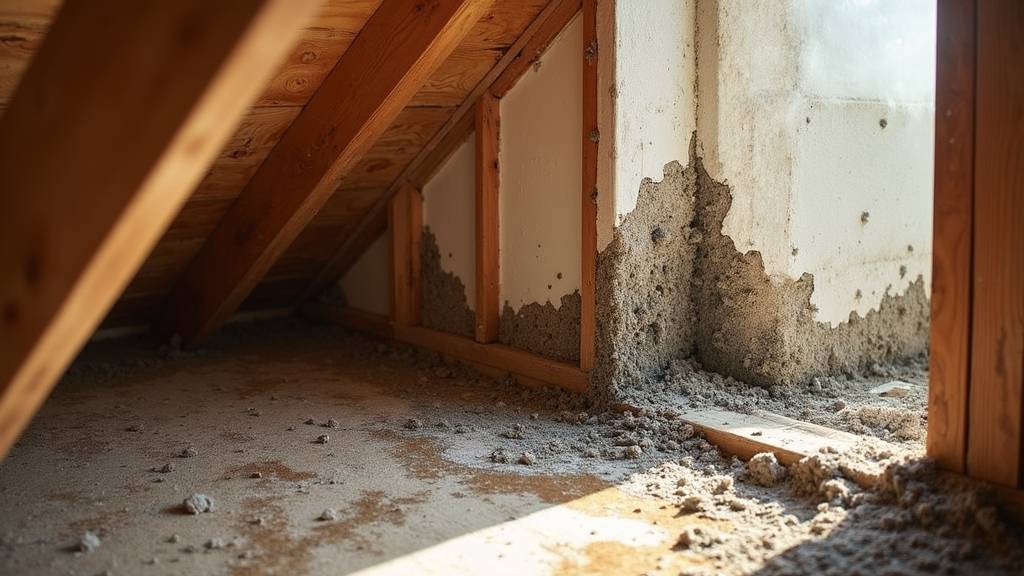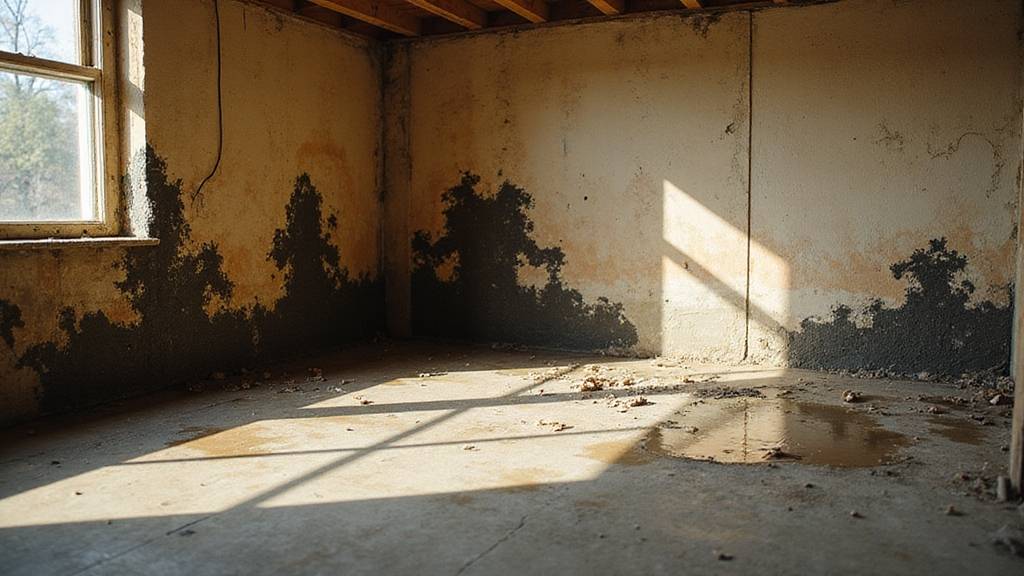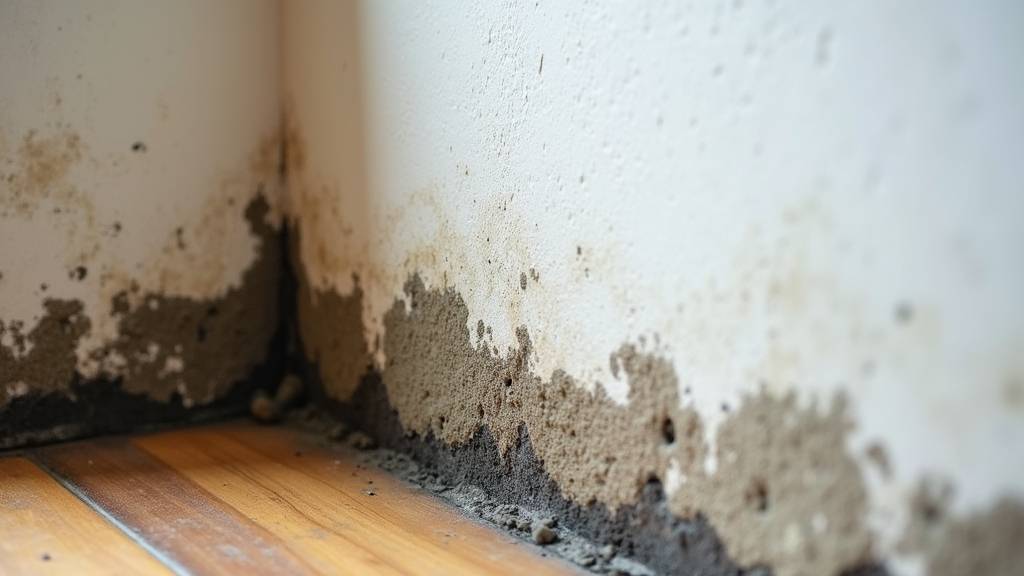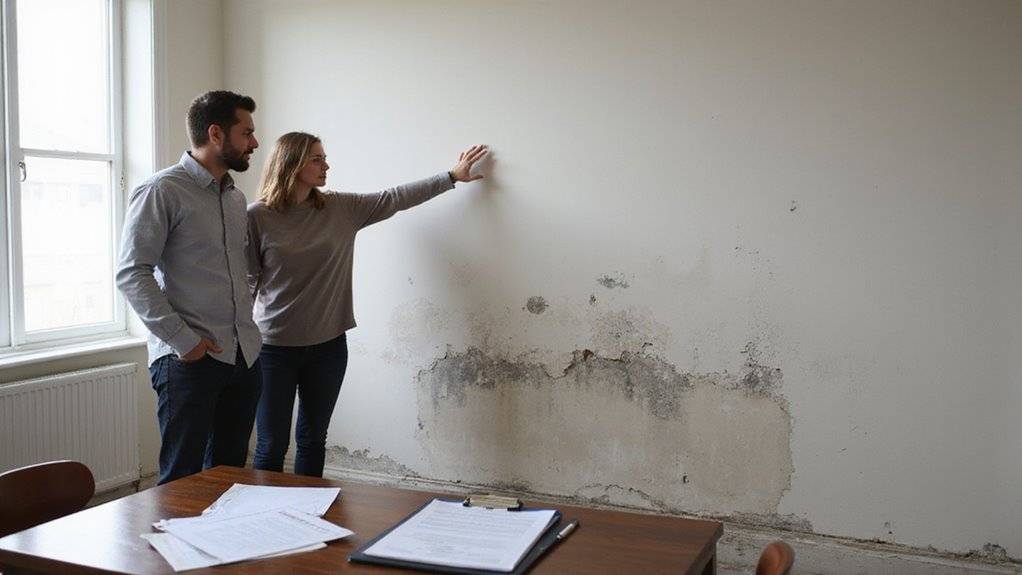Many homes in the U.S. have hidden moisture problems that can cause mold. Sellers often worry about how to handle these issues. Buyers expect honesty, and ignoring the problem can lead to serious trouble.
Trying to hide water damage or mold can backfire. Buyers might find out later and take legal action. This can cost time, money, and your reputation as a seller.
You should always clearly disclose any mold or water damage to buyers to avoid legal and financial risks. Clear disclosure builds trust and can make the sale process smoother.
It also helps you follow the law. This blog will guide you step by step to properly disclose mold and water damage to buyers.
Understanding Your Legal Obligations

Know your legal responsibilities when selling or leasing—disclose all known water or mold issues to avoid future legal complications.
You must know your legal duties when selling or leasing a property. Laws in most states require disclosure of any known water or mold issues. Failing to disclose this can lead to legal trouble.
Sellers must inform buyers about past water leaks, mold problems, or related repairs. If you made insurance claims for water damage, you must share this information. Environmental test results for mold should also be provided if they showed any problems. Providing fair and accurate disclosures is essential to maintain transparency and trust.
Full honesty helps buyers understand possible risks. You should check local disclosure forms to ensure you follow the rules. If you meet these requirements, you protect yourself and build trust during the process. Additionally, understanding your disclosure obligations can help prevent future legal disputes and ensure a smooth transaction.
Common Signs of Mold and Water Damage
You can spot mold and water damage by looking for specific signs. Mold often appears as black, green, or white spots on walls or ceilings. Musty smells may also warn you about hidden mold. Professional inspection can identify hidden issues that are not immediately visible.
Water stains, peeling paint, or bubbling surfaces mean water has entered your home. Warped floors or soft drywall are also warning signs. You should check under sinks, behind appliances, and in basements for leaks or dampness.
If you notice these signs, you should disclose them right away. Early detection can protect your property’s value. Addressing problems quickly may also stop them from getting worse. Proper disclosure is essential to avoid legal issues and ensure transparency with potential buyers.
State and Local Disclosure Requirements

State and local laws set the rules for mold and water damage disclosure. You must know your area’s requirements before selling a home. Rules can be different from one place to another.
Some states require you to report any known mold or previous water damage. Others might ask for details about repairs or prevention steps. Standard forms may be available in some locations.
If your area does not have forms, you should check local laws or ask a real estate expert. Failing to disclose correctly could lead to legal trouble or cancel the sale. Laws may change, so always check for updates.
Following these rules protects you and informs buyers about any property issues. Being aware of disclosure laws can help you avoid potential legal issues and ensure a smoother sale process. Additionally, understanding state-specific requirements helps sellers comply with regulations and prevent future disputes.
Documenting the Extent of the Problem
Clear documentation shows how serious mold or water damage is. Good records help meet legal requirements and protect everyone involved. If you document well, buyers can understand the risks.
You should include photos, written notes, and repair records. Photos should show the date, location, and close-up views. Written notes must describe the area, size, smell, and history of the damage. Including contract details about the damage ensures transparency. If you have mold test results, include lab reports. Repair records need dates, contractor names, and receipts. Moisture readings should list the device, numbers, and locations checked.
A well-organized record shows you are honest. It also makes it easier for buyers to make decisions. If you follow these steps, you will be prepared for any questions.
When to Hire a Professional Inspector

You should hire a professional inspector if you suspect hidden mold or water damage that isn’t visible during your own inspection. An expert can help you meet legal disclosure requirements and ensure you provide an accurate assessment to potential buyers. This step protects you from liability and builds trust in your documentation.
Additionally, understanding the disclosure requirements related to water and mold issues is essential for compliance and transparency. Proper documentation and inspections can also aid in avoiding future disputes with buyers regarding property condition.
Identifying Hidden Problem Areas
Some problem areas with mold or water damage are hidden from view. Issues can exist behind walls, under floors, or inside ceilings. You need to look beyond what you can see.
Leaks, condensation, or poor airflow often cause hidden moisture problems. If you notice stains or smell musty odors, suspect hidden damage. It is important to check places with past water issues.
If you think there are hidden problems, consider hiring a professional. Inspectors have tools to find moisture and mold you cannot reach. Take these steps: check hidden areas, look for moisture sources, and get expert help if needed.
Legal Disclosure Requirements
Sellers must follow state and local laws about disclosing mold or water damage. You must share any known history of water leaks, visible mold, or repairs related to mold. Not following these rules can lead to lawsuits or canceled contracts.
It is important to keep records of all repairs, inspections, and steps taken to fix mold or water problems. These documents help protect you and show you acted responsibly. If you are not sure about past damage, check local rules or consider hiring a professional inspector.
Some areas require a professional inspection or special forms for disclosure. By following these steps, you keep the process honest and clear for buyers. This can help prevent problems after the sale.
Ensuring Accurate Assessment
Accurate disclosure requires knowing your property’s true condition. You should not rely only on what you can see. Many problems, like hidden mold, are hard to spot.
Hire a professional inspector if you notice musty smells or water stains. Inspectors use special tools to find water damage you might miss. Their reports can show if you need mold removal.
You should also get an inspection after leaks, floods, or water intrusion. Certified testing confirms whether any repairs or cleanups worked. Professional inspections help you give honest information to buyers and protect yourself.
Preparing a Thorough Disclosure Statement
When preparing your disclosure statement, you must clearly identify all areas of the property affected by mold or water damage. Specify each location and describe the extent of the issue. List every remediation step you’ve taken, including the dates and types of repairs or treatments performed. Be aware that disclosure requirements vary by jurisdiction, so consult local regulations to ensure full compliance.
Detailing Affected Property Areas
You must state exactly which parts of the property have mold or water damage. If you skip details, buyers may not trust you. Use inspection records to find every affected area.
List each room or space that has damage. Describe what kind of damage is present, such as mold or water stains. If the damage is fixed, say so clearly.
If you give clear and full details, buyers can make good choices. Good records also help protect you from future problems.
Listing Previous Remediation Steps
After finding mold or water damage, list all steps taken to fix the problem. Give clear details about what was repaired or replaced. Include dates, what was done, and who did the work.
If professionals handled the repairs, mention their names and show any reports or invoices. Use warranties or inspection documents as proof of completed work. If you did any repairs yourself, explain the process and materials used.
Accurate records help buyers understand the current condition of the property. If you keep good documentation, you can meet legal requirements and build trust. This also reduces confusion or disputes later.
Providing Repair and Remediation Records
You should give repair and remediation records when disclosing mold or water damage. These records prove you fixed problems and followed proper steps. Buyers and the law often require this information.
Repair documents help buyers trust you. Detailed records show you acted responsibly and met local rules. If you give this information, it can prevent future disputes.
Organize all records by date and keep them complete. Buyers often want to see exactly what was done. If you present clear records, it could help your property’s value. Hassle-free process
Communicating With Potential Buyers
When you have repair and remediation records, you need to share them with buyers. Always tell buyers about any past mold or water damage and how you fixed it. This builds trust and helps avoid problems later. Including documentation of your cash offer process can further demonstrate transparency and ease the selling process.
If you disclose these issues early, you can prevent misunderstandings. You should give buyers the records before negotiations start. Doing this shows you are honest and open. Proper communication with disclosure requirements keeps everyone informed and protected. If you follow these steps, you reduce legal risks. Responsible communication benefits both you and the buyer.
Addressing Buyer Concerns and Questions
Buyers may worry about past mold or water damage. Clear records and honest answers can ease these concerns. Providing proof of repairs and prevention steps helps build trust. Demonstrating a fair cash offer and a straightforward process reassures buyers that the property has been handled responsibly. Sharing documentation such as inspection reports or remediation results can further demonstrate transparency and confidence in the property’s condition.
Sellers should share receipts, inspection reports, and details of repairs. Explaining what caused the problem and how it was fixed is important. If buyers want, they can arrange their own inspection. Professional remediation reports or warranties offer extra assurance. If these documents exist, sellers should present them. This demonstrates a transparent process and commitment to keeping the property in good condition.
Working With Real Estate Agents
A real estate agent helps you sell a home with mold or water damage. The agent explains what you must tell buyers by law. If you follow their advice, you can avoid mistakes and stay within regulations.
Your agent will tell you how to share inspection reports and repair receipts. These papers prove you fixed problems and build trust with buyers. If you have records of repairs, your agent can help you present them clearly.
Inspection reports and repair receipts show you’ve addressed issues—your agent will help you present these records clearly to buyers.
Buyers may have questions about past damage. An agent guides you to answer honestly without giving too much or too little information. If you are unsure what to say, always ask your agent first.
A good agent keeps the sale process smooth and legal. They make sure you stay open and fair with buyers. If you rely on their knowledge, you can reduce risks and sell your home more easily.
Negotiating Repairs and Credits
When mold or water damage is disclosed, you can request the seller to complete specific repairs before closing. Alternatively, you might negotiate for a repair credit, allowing you to handle remediation after the sale. Understanding the pros and cons of each option helps you protect your interests and investment.
Requesting Seller Repair Work
If you find out about mold or water damage, you can ask the seller to make repairs or offer a credit. You should make your requests clear and direct.
Ask the seller for professional mold removal. A qualified expert should handle the job to prevent mold from coming back. This helps protect your health and the home’s value.
Request a licensed contractor to check for all water damage. A thorough inspection will reveal hidden issues. If any damage is found, repairs should cover every affected area.
Insist on getting proof of all repairs and steps taken to prevent future problems. Documentation gives you peace of mind. If you do not receive this, you may want to reconsider moving forward.
Offering Buyer Repair Credits
Negotiating a repair credit often gives buyers more control than having the seller make repairs. A repair credit lets you choose your own contractor and oversee the work. You can also make sure repairs meet your standards.
If the inspection finds mold or water damage, review the details carefully. Use these findings and the seller’s disclosure to support your credit request. The credit amount should match the estimated repair costs.
The purchase agreement must state how credits are applied at closing. This process protects your interests and helps avoid delays. A repair credit can also prevent problems with incomplete repairs by the seller.
Protecting Yourself From Future Liability
Real estate deals can lead to future legal problems if mold or water damage is not handled properly. You should take steps now to prevent liability later. Disclosing all known problems is required and protects you legally.
If you skip disclosure, you risk legal trouble. Keep records of inspections and all written communications with buyers. Written proof shows your honesty if any dispute happens.
To protect yourself, hire a certified inspector to check for mold and water damage. Give buyers written documents about any issues and repairs. Store all reports and emails as evidence of your transparency.
If you act carefully now, you reduce your risk in the future.
The Role of Home Warranties
While selling a home that’s had mold or water issues, a home warranty can offer additional reassurance to both you and the buyer. By including home warranty coverage in your sale, you provide a safety net for unforeseen repairs related to major systems or appliances, potentially impacted by past water damage.
Buyers appreciate knowing they can address certain problems without immediate out-of-pocket costs. You should clearly outline the scope of the policy, as not all warranties cover mold remediation or pre-existing issues. The warranty claim process typically requires prompt reporting of issues and verification that the problem falls under the stated coverage.
By being transparent and proactive, you can streamline the transfer of home warranty coverage and help facilitate a smoother, more confident transaction for all parties.
Learning From Other Sellers’ Experiences
You can avoid common mistakes by learning from other sellers’ experiences. Sellers often face problems when disclosing mold or water damage. Studying their actions helps you make better decisions.
Disclosure statements from past sales show what information is needed. Reviewing these examples helps you avoid missing important details. Proper disclosures also lower the risk of legal trouble.
Many sellers used certified professionals for mold prevention or repairs. If you do the same, your property may sell faster. Professional reports give buyers more confidence.
Clear and honest communication with buyers is important. Document all repairs and preventive actions you take. This builds trust and protects you if questions arise.
Conclusion
If you disclose mold and water damage properly, you can avoid legal issues and maintain your reputation as a seller. Buyers appreciate honesty and are more likely to trust sellers who provide clear information. Following the right steps protects everyone involved in the sale.
If you want to sell a property with damage, you have options. Some companies, like us, buy houses for cash in any condition. This means you can sell quickly without worrying about repairs or extensive disclosures.
If you are interested in a simple and fast sale, we can help. At Freedom Path Investors, we buy houses for cash and handle the process smoothly. Contact us today to learn more about how we can work together.







